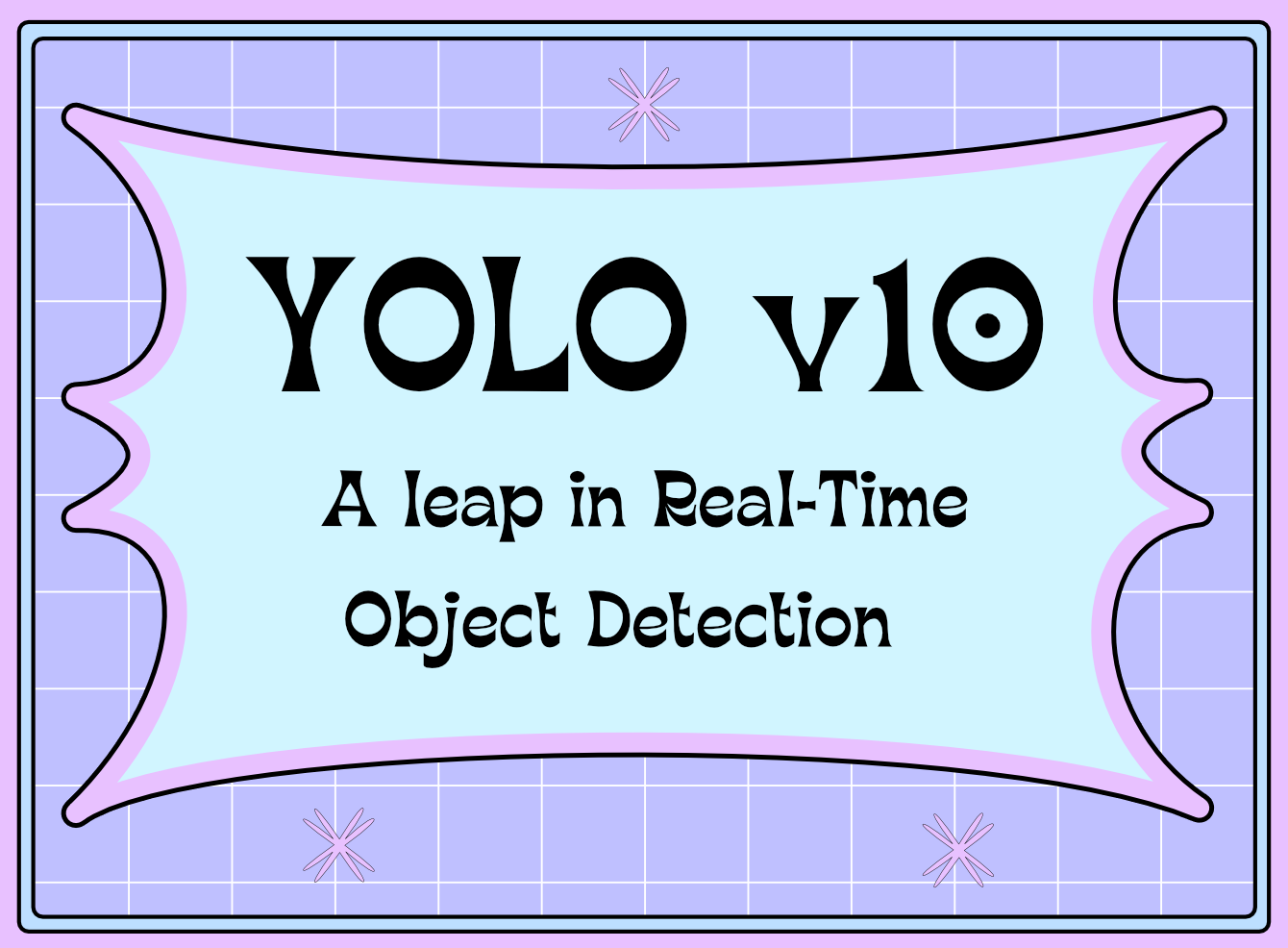The world of computer vision continues to evolve rapidly, and the YOLO (You Only Look Once) model series is spearheading this evolution. YOLO v10, the latest release in this iconic series, is beyond an incremental update—it’s a transformative leap forward in speed, accuracy, and flexibility. It sets a new benchmark for real-time object detection and is poised to revolutionise the development of AI-powered computer vision software and tools.
In this article, we’ll explore what makes YOLO v10 stand out, provide comparative analysis, and present data that emphasises why YOLO v10 is a game-changer.
YOLO v10: Key Enhancements and Statistical Data
1. Performance Metrics: Speed and Accuracy
YOLO v10 boasts significantly enhanced speed and accuracy compared to previous iterations:
- Inference Speed: YOLO v10 achieves an average inference speed of 120 FPS (frames per second) on standard GPUs, making it one of the fastest object detection models available. In edge environments (like mobile devices), optimized versions of YOLO v10 maintain impressive speeds between 60-80 FPS.
- Mean Average Precision (mAP): YOLO v10’s mAP@0.5, a key measure of detection accuracy, is reported at 58.7%, a significant jump from YOLO v5’s 50.5% and YOLO v8’s 54.3%. At mAP@0.75 (stricter threshold), YOLO v10 achieves 49.2%, demonstrating superior precision even in challenging scenarios.
2. Smarter Feature Extraction with Transformer Integration
The Hybrid Transformer-CNN architecture employed in YOLO v10 delivers more efficient feature extraction across multiple scales:
- Small Object Detection Improvement: YOLO v10 improves small object detection by 27% compared to YOLO v8, thanks to its dynamic multi-scale feature aggregation and adaptive attention mechanisms.
- Cross-Dataset Generalization: Tests across multiple datasets (COCO, Pascal VOC, Open Images) show that YOLO v10 generalizes better, with a 15-20% improvement in F1 scores for unseen object classes compared to earlier versions.
3. Advanced Training Techniques Yield Better Results
YOLO v10 uses advanced data augmentation and training techniques:
- Self-Distillation and Semi-Supervised Learning: These techniques improve label efficiency and reduce overfitting. YOLO v10’s semi-supervised approach shows a 35% reduction in labeled data requirements without compromising on accuracy, making it a powerful choice for projects with limited datasets.
- Mosaic Augmentation 2.0: The enhanced mosaic augmentation strategy improves model robustness and performance, resulting in a 20% boost in object recall rates compared to traditional augmentation methods.
4. Post-Processing Efficiency: Improved Non-Maximum Suppression (NMS)
YOLO v10 incorporates a refined Soft-NMS algorithm with IoU decay:
- Reduction in False Positives: Compared to YOLO v8, YOLO v10 achieves a 32% lower false positive rate in crowded scenes, while maintaining fast inference speeds. This is critical for applications like security surveillance and autonomous vehicles.
- Lower Latency: The optimized post-processing steps reduce average latency by 18%, making YOLO v10 ideal for real-time, mission-critical applications.
5. Lightweight Variants for Edge Devices
YOLO v10 includes YOLO v10-Nano, specifically designed for edge computing:
- Model Size: YOLO v10-Nano is only 5 MB in size while retaining over 90% of the accuracy of the full model. It runs efficiently on low-power devices like Raspberry Pi or smartphones.
- Deployment Flexibility: The model can be deployed across multiple platforms (TensorFlow Lite, ONNX, Core ML) with up to 30% lower memory consumption compared to YOLO v8-Tiny.
6. Comparison Against Previous Versions
| Features | YOLO v10 | YOLO v8 | YOLO v5 |
| Backbone Architecture | Hybrid Transformer-CNN | C3 CSPNet | CSPDarknet |
| Detection Head | Dynamic Head | Decoupled Head | Traditional |
| Anchor Mechanism | Fully anchor-free | Anchor-free hybrid | Anchor-based |
| Speed (FPS) | ~120 FPS | ~100 FPS | ~80 FPS |
| mAP@0.5 | 58.7% | 54.3% | 50.5% |
| Small Object Detection | Excellent (27% better) | Goode | Moderate |
| Training Techniques | Mosaic 2.0, Self-Distillation | Mixup & CutMix | Mosaic Augmentation |
| Model Size (Standard) | Optimised | Small | Medium |
| False Positive Rate (Crowded) | Low (32% better) | Moderate | Higher |
7. Real-World Use Cases and Benefits
- Autonomous Vehicles: With YOLO v10’s enhanced small object detection and faster processing times, AI systems can now identify pedestrians, vehicles, and obstacles more reliably, improving overall safety.
- Healthcare: The higher accuracy and lower false positives make YOLO v10 ideal for applications like detecting abnormalities in medical images (X-rays, MRIs).
- Retail Analytics: YOLO v10’s faster multi-scale detection ensures real-time tracking and analysis of customer behavior, enhancing decision-making in smart retail systems.
Conclusion
As the landscape of computer vision continues to evolve, the release of YOLO v10 stands as a game-changing advancement for industries relying on real-time AI applications. With its unprecedented speed, improved accuracy, and versatile deployment capabilities, YOLO v10 unlocks opportunities for creating more robust, scalable, and precise solutions across diverse sectors.
At BiCSoM Technologies, we specialise in building out-of-the-box solutions in the field of computer vision, leveraging the latest advancements like YOLO v10 to deliver cutting-edge products. Whether you need to enhance object detection in autonomous vehicles, optimize smart retail analytics, or improve healthcare diagnostics, our team at BiCSoM is ready to bring our expertise in YOLO v10 and other advanced models to your projects, give us a shout at ag@bicsom.co. We’re passionate about helping businesses achieve AI excellence and would be thrilled to collaborate on innovative computer vision solutions tailored to your needs.

